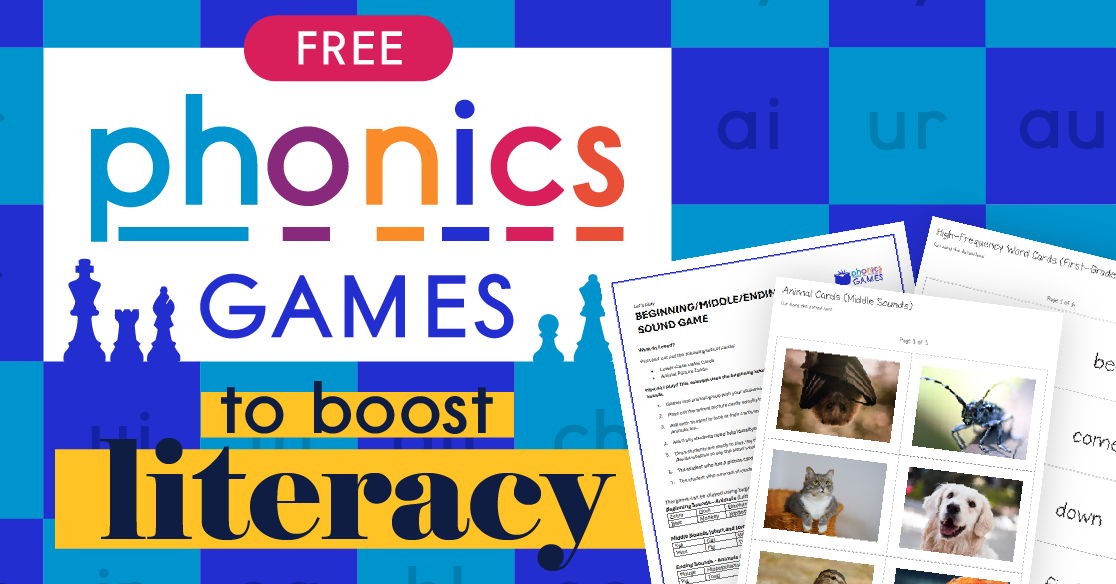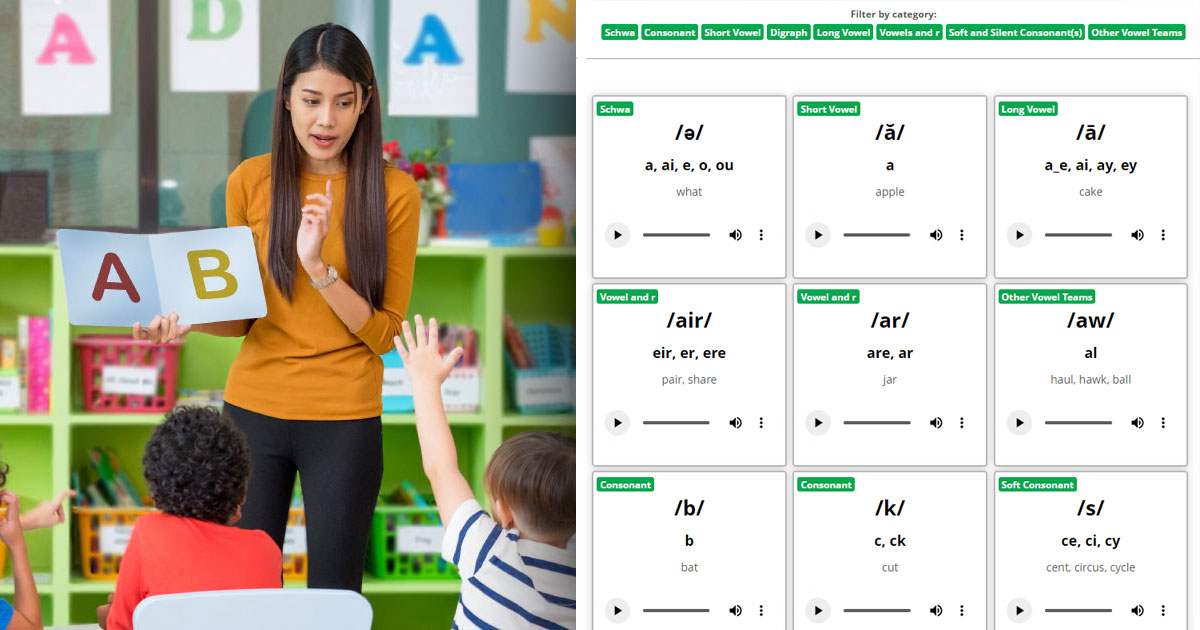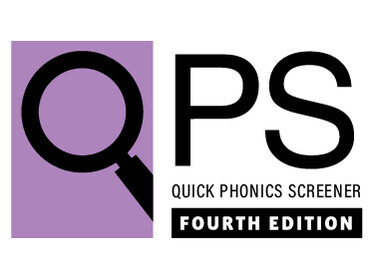.jpg)
What Is Phonics?
Phonics is "a system of teaching reading that builds on the alphabetic principle, a system of which a central component is the teaching of correspondences between letters or groups of letters and their pronunciations" (Adams, 1990, p. 50). Decoding is the process of converting printed words to spoken words. Readers use phonics skills, beginning with letter/sound correspondences, to pronounce words and then attach meaning to them. As readers develop, they apply other decoding skills, such as recognizing word parts (e.g., roots and affixes) and the ability to decode multisyllable words. Students also learn to apply decoding skills to irregular words that are almost decodable.
Phonemic awareness and phonics are not the same, but instruction in phonemic awareness and phonics tends to overlap. As students begin to transition to phonics, they learn the relationship between a phoneme (sound) and grapheme (the letter(s) that represent the sound) in written language. Phonemic awareness instruction improves phonics skills, and phonics skills improve phonemic awareness (Lane and Pullen, 2004).
 Read Naturally programs for teaching phonics
Read Naturally programs for teaching phonics
Key Concepts
Implicit vs. Explicit Phonics Instruction
There are two approaches to phonics instruction:
- Systematic, explicit phonics instruction: Sound/spelling correspondences are taught directly and systematically.
- Incidental, implicit phonics instruction: Sound/spelling correspondences are inferred from reading whole words and introduced as students encounter them in text.
The National Reading Panel (2000) conducted a meta-analysis to review and evaluate research on the effectiveness of various approaches for teaching children to read. Their findings showed that students who received systematic and explicit phonics instruction were better readers at the end of instruction than students who received non-systematic or no phonics instruction (Ehri, 2006; Armbruster, Lehr, and Osborn, 2001).
The National Reading Panel also stated that "the hallmark of systematic phonics programs is that they delineate a planned, sequential set of phonic elements, and they teach these elements, explicitly and systematically" (2000, p. 2-99).
Regular and Irregular Words
Word recognition involves two types of words: regular words (the words which students can decode by sounding them out) and irregular words (the words students cannot completely decode by sounding them out). For example:
| Regular Words (decodable) | Irregular Words (not decodable) |
| hot | they |
| black | was |
| plain | said |
In some programs, regular words that can be decoded are called sound-out words. Irregular words that must be learned by memory are called spell-out words.
In the beginning stages of phonics instruction, an irregular word can also be a word that the student does not yet have the specific phonics skills to read (Carnine et al., 2006). For example, before a student learns that together the letters k-n say /n/, the words knew and know are irregular words. Once a student learns that together the letters k-n say /n/, these words are no longer irregular.
High-Frequency Words
Another important emphasis of phonics and word recognition is learning high-frequency words. Eight words account for 18% of all the words students typically read and write, 25 words for 33%, 100 words for 50%, and 300 words for 65% (Fry, Fountoukidis, & Kress, 2000). High-frequency words can be regular or irregular.
 250+ High Frequency Words
250+ High Frequency Words
Multisyllabic Words
The average number of syllables in the words students read increases steadily in the primary grades. In fifth grade and beyond, knowing how to decode multisyllabic words is essential, because most of the words students encounter in print are words of 7 or more letters and two or more syllables (Nagy and Anderson, 1984).
Systematic and explicit instruction in decoding multisyllabic words is important. Explicit instruction in how to decode multisyllabic words is most successful for students who can already accurately decode single-syllable words and accurately pronounce all of the typical vowel combinations. However, the ability to decode single-syllable words does not necessarily transfer to reading multisyllabic words (Just & Carpenter, 1987).
Research shows that students can be taught to flexibly segment multisyllabic words into spelling units (chunks) that can be decoded (Bhattacharya and Ehri, 2004; Archer et al. 2003, 2006). Students need two key skills to successfully decode multisyllabic words:
- Pronouncing Affixes: About 80% of all words have one or more affixes—prefixes or suffixes (Cunningham, 1998). Affixes are worth teaching, because there are a limited number of them, they occur frequently, and suffixes are especially consistent across words (Shefelbine and Newman, 2004). Students who have learned to read prefixes and suffixes by sight (e.g., re-, -tion, ex-, -sion, -ism, ad-, -sive) and are able to pronounce them in isolation are more successful at decoding multisyllabic words.
 Common affixes (prefixes and suffixes)
Common affixes (prefixes and suffixes) - Pronouncing Open and Closed Syllables: We know that open and closed syllables make up almost 75% of syllables in English words (Stanback, 1992). Research has shown that there is a significant relationship between students’ sight knowledge of open and closed syllables and students’ ability to read multisyllabic words (Shefelbine, Lipscomb, and Hern, 1989).
The Importance of Developing Automaticity in Phonics
Research tells us that in order to become fluent readers, students need to learn to decode unknown words accurately and automatically. Students who must use all of their mental energy to sound out the words are not able to focus on the meaning of what they are reading (LaBerge and Samuels, 1974). In fact, research findings show that those students who have not developed automaticity by the beginning of second grade are at risk for reading failure (Berninger et al., 2003, Berninger et al., 2006).
Most phonics programs teach students to decode accurately, but learning phonics does not guarantee that students are able to decode words automatically. Students must develop the ability to read words quickly and effortlessly.
Progression of Phonics Skills
Children typically progress through a sequence of identified phonics skills as they learn to read and spell—whether they learn slowly or quickly (Ehri, 2004; Moats, 1995; Templeton and Bear, 1992; Treiman and Bourassa, 2000).
Here is a simple sequence of phonics elements for teaching sound-out words that moves from the easiest sound/spelling patterns to the most difficult:
- Consonants & short vowel sounds
- Consonant digraphs and blends
- Long vowel/final e
- Long vowel digraphs
- Other vowel patterns
- Syllable patterns
- Affixes
Read Naturally Programs for Teaching Phonics
Read Naturally offers several programs that are based on the research about phonics and word recognition described above.
 | Signs for SoundsTM
Teacher-led instruction for teaching regular phonetic spelling patterns and regular and irregular high-frequency words through spelling. Focuses on spelling and phonics with additional support for phonemic awareness.
 Learn more about Signs for Sounds Learn more about Signs for Sounds
 Signs for Sounds samples Signs for Sounds samples |
 | Read Naturally® Live
A mostly independent, cloud-based program with built-in audio support. The Phonics series focuses on phonics and fluency with additional support for phonemic awareness and vocabulary.
 Learn more about Read Naturally Live Learn more about Read Naturally Live
 Video: Working through phonics stories (Note: This video walks through the steps in the Read Naturally Live Phonics series, but the steps in the Read Naturally Encore Phonics series are essentially the same.) Video: Working through phonics stories (Note: This video walks through the steps in the Read Naturally Live Phonics series, but the steps in the Read Naturally Encore Phonics series are essentially the same.) |
Bibliography
Adams, M. J. (1990). Beginning to read: Thinking and learning about print. Cambridge, MA: MIT Press.
Archer, A., M. Gleason, and V. Vachon. (2003). Decoding and fluency: Foundation skills for struggling older readers. Learning Disability Quarterly, 26, pp. 89-101.
Archer, A., M. Gleason, and V. Vachon. (2006). REWARDS: Reading excellence: Word attack and rate development strategies. Longmont, CO: Sopris West.
Armbruster, Lehr, and Osborn. (2001). Put reading first: The research building blocks for teaching children to read. Jessup, MD: National Institute for Literacy.
Berninger, V. W., K. Vermeulen, R. B. Abbott, D. McCutcheon, S. Cotton, J. Cude, S. Dorn, and T. Sharon. (2003). Comparison of three approaches to supplementary reading instruction for low-achieving second-grade readers. Language, Speech, & Hearing Services in Schools, 34, pp. 101-116.
Berninger, V. W., R. B. Abbott, K. Vermeulen, and C. M. Fulton. (2006). Paths to reading comprehension in at-risk second-grade readers. Journal of Learning Disabilities, 39, pp. 334-351.
Bhattacharya, A., and L. Ehri. (2004). Graphosyllabic analysis helps adolescent struggling readers read and spell words. Journal of Learning Disabilities, 37, pp. 331-348.
Carnine, D. W., J. Silbert, E. J. Kame’enui, S. G. Tarver, and K. Jungjohann. 2006. Teaching struggling and at-risk readers. Upper Saddle River, NJ: Pearson.
Cunningham, P. M. (1998). The multisyllabic word dilemma: Helping students build meaning, spell, and read “big” words. Reading and Writing Quarterly, 14(2), pp. 189-218.
Ehri, L. (2004). Teaching phonemic awareness and phonics. In P. McCardle and V. Chhabra (eds.). The voice of evidence in reading research, pp. 153-186. Baltimore, MD: Brookes Publishing.
Ehri, L. (2006). More about phonics: Findings and reflections. In K. A. Dougherty Stahl and M. C. McKenna (eds.), Reading research at work: Foundations of effective practice. New York: Guilford.
Fry, E. B., Fountoukidis, D. L., & Kress, J. E. (2000). The reading teacher’s book of lists, 4th ed. San Francisco, CA: Jossey-Bass.
Honig, B., L. Diamond, and L. Gutlohn. (2013). Teaching reading sourcebook, 2nd ed. Novato, CA: Arena Press.
Just, M. A., and P. A. Carpenter. (1987). The psychology of reading and language comprehension. Needham Heights, MA: Allyn & Bacon.
LaBerge, D., & Samuels, S. J. (1974). Toward a theory of automatic information processing in reading. Cognitive Psychology, 6, pp. 292–323.
Lane, H. B., and P. C. Pullen. (2004). A sound beginning: Phonological awareness assessment and instruction. Boston: Allyn & Bacon.
Moats, L. C. (1995). Spelling: Development, disability, and instruction. Baltimore, MD: York Press.
Nagy,W. E., and R. C. Anderson. (1984). How many words are there in printed school English? Reading Research Quarterly, 19, pp. 304-330.
National Reading Panel. (2000). Teaching children to read: An evidence-based assessment of the scientific research literature on reading and its implications for reading instruction. Washington, DC: National Institute of Child Health and Human Development.
Shefelbine, J., L. Lipscomb, and A. Hern. (1989). Variables associated with second, fourth, and sixth grade students’ ability to identify polysyllabic words. In S. McCormick and J. Zutell (eds.), Cognitive and social perspectives for literacy research and instruction, pp. 145-149. Chicago: National Reading Conference.
Shefelbine, J., and K. Newman. (2004). SIPPS: Systematic instruction in phoneme awareness, phonics, and sight words. Challenge level, polysyllabic decoding, 2nd ed. Oakland, CA: Developmental Studies Center.
Stanback, M. L. (1992). Syllable and rime patterns for teaching reading: Analysis of a frequency-based vocabulary of 17,602 words. Annals of Dyslexia, 42, pp. 196-221.
Templeton, S. & Bear, D. (eds.) (1992). Development of orthographic knowledge and the foundation of literacy. Hillsdale, NJ: Lawrence Erlbaum Associates.
Treiman, R. & Bourassa, D. (2000). The development of spelling skill. Topics in Language Disorders, 20, 1-18.
.jpg)













